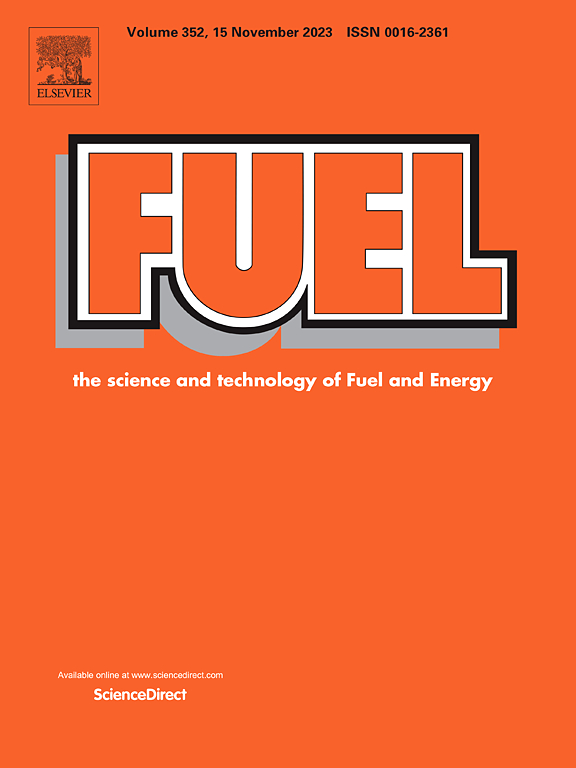Effect of Zn promoter on precipitated iron catalyst for linear alpha olefin production via high-temperature Fischer-Tropsch synthesis: Modulating carbon chemical potential
IF 6.7
1区 工程技术
Q2 ENERGY & FUELS
引用次数: 0
Abstract
The carbon chemical potential (μc) affects the active phase formation of the Fischer-Tropsch synthesis (FTS) catalyst, which determines catalytic performance and stability. Herein, we report a Zn-promoted precipitated iron-based (Zn-P-Fe) catalyst with enhanced linear alpha-olefin (LAO) yields and stability for high-temperature FTS. This performance improvement is obtained by modulating the μc on the catalyst surface without changing the structural properties. An optimized 10Zn-P-Fe catalyst exhibits a remarkably high C6-C8 LAO selectivity in total hydrocarbon (12.1 %) at high CO Conversion (89.8 %) with 114 h stability under HT-FTS conditions of 305 ℃, 1.5 MPa and H2/CO = 1, outperforming a 0Zn-P-Fe catalyst and other catalysts previously reported in the literature. An analysis of spent catalysts reveals that the superior activity of the 10Zn-P-Fe catalyst can be ascribed to high coke resistance during the reaction. The primary role of the Zn promoter is to reduce μc, which hinders the transformation of the iron carbide phase from Fe5C2 to Fe7C3 and coke formation during the reaction, on the catalyst surface. However, introducing an excessive amount of Zn promoter induces successive olefin hydrogenation on the catalytic surface, resulting in deteriorated olefin selectivity. Therefore, a key factor is maintaining the proper μc by introducing appropriate amounts of Zn promoter.

求助全文
约1分钟内获得全文
求助全文
来源期刊

Fuel
工程技术-工程:化工
CiteScore
12.80
自引率
20.30%
发文量
3506
审稿时长
64 days
期刊介绍:
The exploration of energy sources remains a critical matter of study. For the past nine decades, fuel has consistently held the forefront in primary research efforts within the field of energy science. This area of investigation encompasses a wide range of subjects, with a particular emphasis on emerging concerns like environmental factors and pollution.
 求助内容:
求助内容: 应助结果提醒方式:
应助结果提醒方式:


